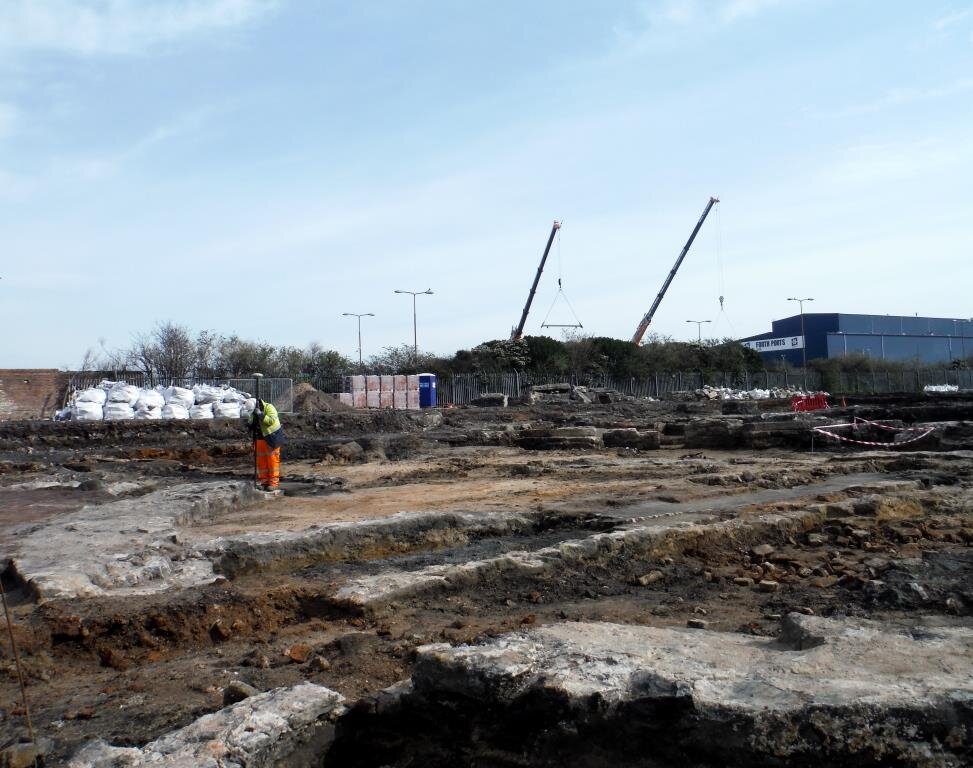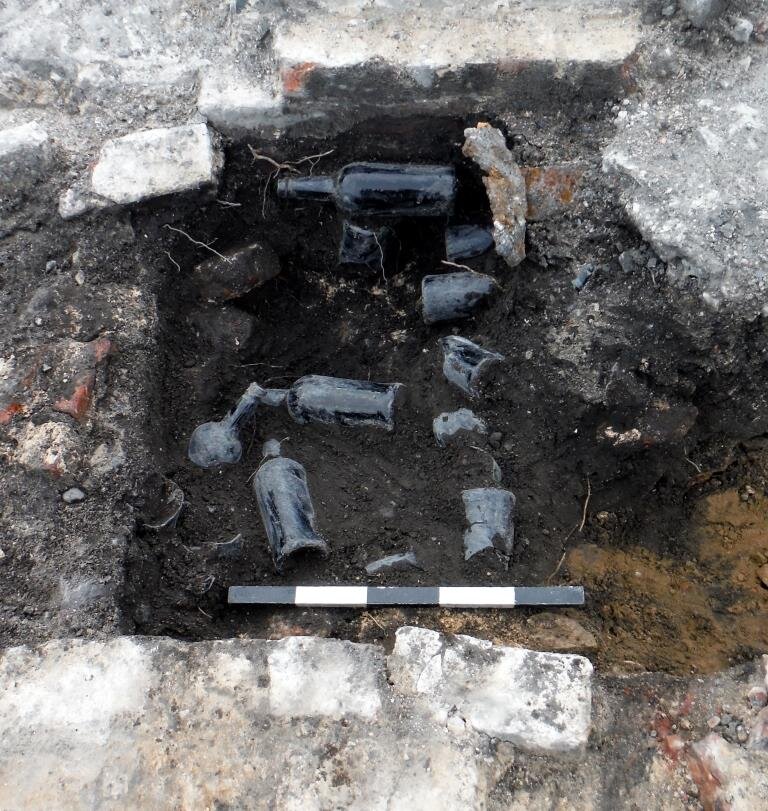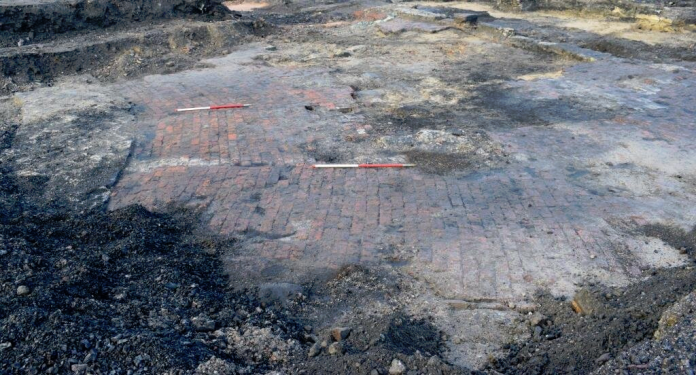AOC is undertaking ongoing excavations on behalf of Barratt Homes Ltd and the City of Edinburgh Council Archaeology Service in advance of development on Salamander Street in Leith. This is the site of the former Edinburgh & Leith Glass Works which operated in the 18th and 19th centuries.
Investigations to date have revealed significant remains relating to the glass works including stone and brick walls, floors, furnaces, and deposits of glassworking material. Excavation at the north-west end of the site has uncovered a number of ancillary workshops around the bases of two glass cones. Glassmaking cones are large conical brick chimney-structures over the furnaces used for glass production, and may have stood up to 30 m in height – dominating the Leith skyline in the 18th and 19th centuries.

The first cone that was excavated may have also been the first one constructed on the site with the opening of the glassworks in 1747. The base of the cone survives as a large sandstone wall (c.1.5 m in width and up to 0.3 m in height), approximately 20 m in diameter. The remains of ancillary structures, including a brick floor were appended to the north and west sides of the cone. In the centre of the cone, the foundations of the central furnace were found. Parts of this structure have been significantly truncated, probably throughout the life of the wider glassworks and in the later 19th century.
A second cone has been excavated to the east of the first. It is unclear when this was constructed though this may be clarified with further investigations. In contrast to the first cone, it is octagonal in plan and the walls have survived to a height of 1 m. The layout is almost symmetrical, with brick floors to either side of a central furnace, extending into further ancillary workshops to the north. Within this cone, the springs of brick arches have been excavated in addition to a vaulted structure to the east.
Over its period of operation, c.1747-1874, the glass works continued to change and develop with new cones and workshops constructed over time as older buildings were refurbished, changed function, or were demolished. Some of these changes can be clearly seen on early maps of the site, with the earliest evidence of the glass works visible on John Laurie’s map of 1789 and various modifications drawn in detail on 19th century OS maps. This has been apparent during the excavation with the demolished remains of earlier walls and blocked doorways attesting to the dynamic history of the site.

A number of artefacts have been found in deposits relating to glassworking at the site that demonstrate the wide variety of objects produced here. Historical records suggest that carboys (large glass containers used in chemistry) up to 1 m in height were made here as well as finer bespoke glassware such as fittings for chandeliers. Post-excavation will reveal the full breadth of objects produced at this site. One of the main products of the glass works was bottles, crucial to the busy wine trade of Leith in the 18th and 19th centuries.
Excavations will continue towards the eastern end of the site where it is hoped the remains of at least two more glass cones will be revealed as well as further workshops. This site is offering an insight into the intriguing history of glass making in Leith, an important element of Leith and Edinburgh’s industrial past.
Source: AOC Archaeology Group (follow link for more images and news)

